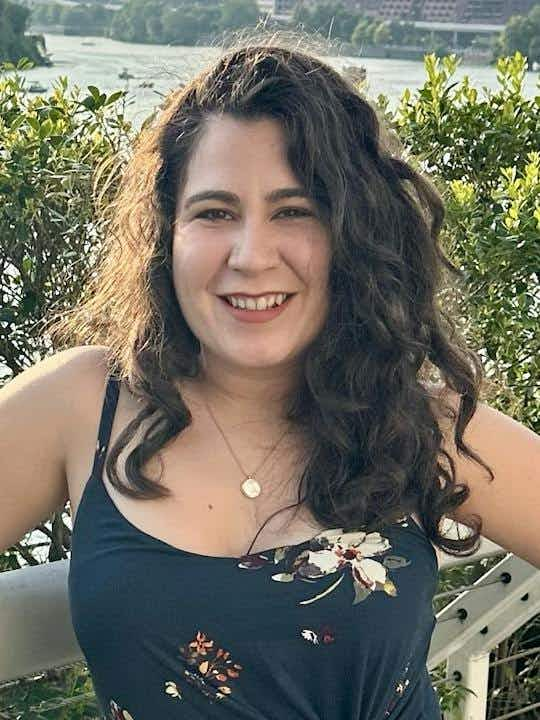Anatomy & Physiology: How the Body Works in Harmony
Anatomy and physiology work together to define how the human body operates by explaining the function and structure of its many components. This course provides you with a comprehensive view of the major body regions and systems through engaging course videos featuring a variety of educational tools and procedures including cadaver dissection. Explore the musculoskeletal, nervous, cardiovascular, respiratory, renal, and gastrointestinal systems, and apply your knowledge to scenarios from a variety of related fields.
Program Dates
Choose the course length that works for you: 1-week intensives, 2-week sessions, and 4-week sessions
Eligibility
For students ages 13 and up
Fees
$1,895
Examine The Foundations of Anatomy and Physiology
Discover the Harmony of the Human Body.
Master key anatomical terms and language, and describe how the nervous system communicates with and controls the body's systems. Create a presentation exploring how bodily systems work together to respond to changes in internal or external environments.
Examine the Musculoskeletal System.
Analyze the functions and structural features of bones and the contractile mechanism of skeletal muscles. Discover the relationship between joints and muscles that allows for specific movements.
Investigate the Relationship Between the Cardiovascular and Respiratory Systems.
Determine how the lungs oxygenate blood and how the chambers of the heart pump blood through the body. Create a schematic displaying the interplay between the heart, blood vessels, and lungs.
Review the Renal System.
Consider the renal system’s contribution to homeostasis by maintaining an essential balance of water and salts and removing harmful excess. Learn how the kidneys and bladder function.
Delve into the Gastrointestinal System.
Showcase the GI system’s role in breaking down food to support the body’s need for energy and nutrients. Distinguish between the endocrine and exocrine functions of the pancreas.
Explore Degrees and Careers in Medicine or Physiology.
Topics covered offer a vital background for college majors and potential careers in medicine and physiology. These include physician, surgeon, exercise physiologist, pharmacist, or lab technician.
How You Will Benefit
- Be able to identify and apply the fundamental terminology used in anatomy and physiology.
- Describe the muscle compartments of the upper and lower limbs, and determine how these muscles act on joints to produce movement.
- Know the components of the cardiovascular and respiratory systems and describe how they work together to oxygenate blood.
- Identify the organs and structures of the gastrointestinal system and discuss their functions in the digestion and absorption of nutrients.
- Complete a Final Capstone Project to demonstrate what you’ve learned.
- Learn how anatomy and physiology prepare you for careers in medicine, research, forensic science, and more.
- Earn a Certificate of Completion from Georgetown University.

Three Learning Advantages Designed for You
Final Capstone Project
All online courses culminate in a Final Capstone Project that allows you to:
- Use what you’ve learned to design an informational pamphlet that will be given to patients who are undergoing diabetic treatment.
- Utilize topics drawn from each of the modules in the pamphlet’s creation.
Mentoring
You’ll receive guidance from a mentor who can support you and answer questions as you deepen your learning experience. You can expect:
- Encouragement and direction on all assignments.
- Inspiration, motivation and confidence to help you succeed.
- Brainstorming and ideation help as you prepare for your Final Capstone Project.
Flexible Learning
- 100% online learning that works with your schedule.
- Flexible learning format through video lessons. Tune in anytime that works for you.
- 20-30 hours of total instruction and course work, including engaging multimedia, simulations, and curated assignments for which you will receive guidance and support from mentors.
Apply Now for the Next Available Course
Hear from Georgetown University
Course Designed by Georgetown University Faculty

Elise R. Orellana, Ph.D.
Assistant Professor of Biochemistry and Molecular & Cellular Biology
As an Assistant Professor at Georgetown University's School of Medicine, Dr. Orellana is the co-director of Medical Gross Anatomy and teaches in medical, special masters, and biochemistry graduate curricula. She has interests in using technology to aid learning, and is currently developing a dissection video series and an anatomy mobile app.
Meet Your Mentors and TAs
Quinn
Holds a Master of Science in Nursing and a Bachelor of Science in Nursing. Holds a certification as a Family Practice Nurse Practitioner and currently works as a Nurse Practitioner.
Carnela
Georgetown alumni with a degree in Global Health. Carnela's also currently a high school teacher.
Want to Know More?
Sign up for more information and we’ll be in touch.
Frequently Asked Questions
How will you be graded? What are assignments like? How much time do you have to turn around a project? When do you find out if you’re admitted? Find answers to your questions here.
Answers to Your Questions HereScholarships
We offer need-based scholarships for participating students who exhibit high potential and an inability to pay the full tuition.
- If you haven’t applied to the program, apply here. After submitting your application, click “Apply for a need-based scholarship” on the confirmation page to request a scholarship.
- If you’ve already applied to the program, sign in to your profile to check your scholarship status. If we don’t have a scholarship request on file, click “Apply for a need-based scholarship” to request a scholarship.
The University reserves the right to modify the course as may become necessary.

